Motorcycle Investor mag
Subscribe to our free email news
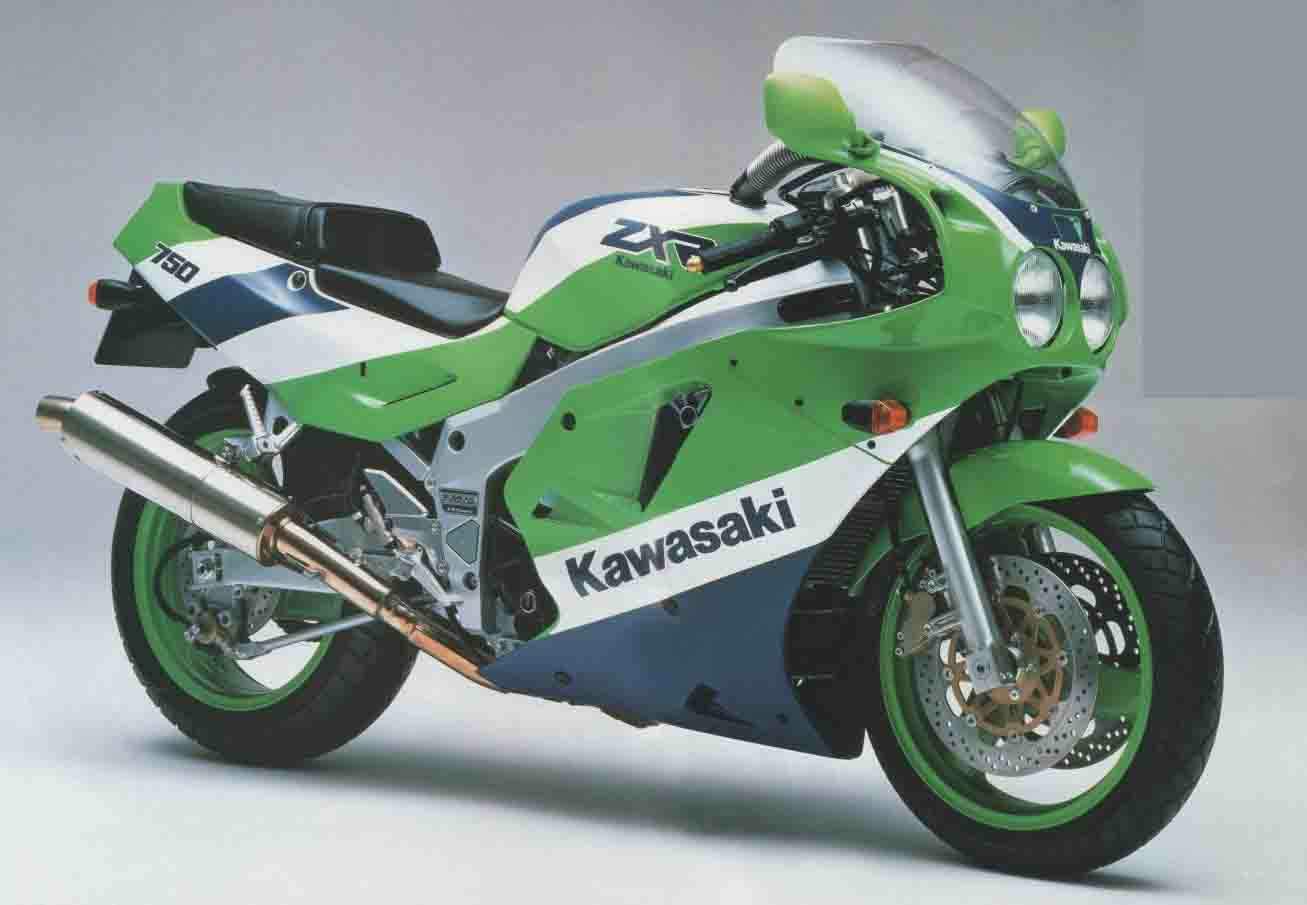
Buyer Guide - The Class of 1990 Classics
(written for MT #358, April 2020)
by Guy 'Guido' Allen
For most of us, clocking up three decades means we can no longer pretend to be a kid. For motorcycles it means cheaper reg and hopefully a dignified ride into old age. But which one should you pick?
Here’s a thought for you, with club plates or permits pretty much universal across the country, there is now a real spike in demand for bikes as they turn 30. In most states, that’s when you can ditch the now hideously expensive conventional registration for a cheaper alternative. Victoria is the odd one out here, as it allows the change-over at 25 years.
What those club plate schemes mean is you can get to use the old toy on the odd club run and still enjoy it, without forking over hundreds of dollars a year to register something that spends most of its life sitting in the shed. Something sensible from your state government – who knew that was possible?
For many of us, it means that collecting motorcycles is actually affordable. You’re not wrestling with a stratospheric annual rego bill and can fritter away the money on far more important things, like more bikes.
Righto – now for the key question: what’s the pick of the new crop of up and comers? Believe it or not, a motorcycle built in 1990 is now eligible for club or ‘classic’ plates. (Who knew we’d all live that long?) To come up with a selection, we delved into a complete list of the models available back in 1990, whittled that down to an extensive list of highlights, and went from there.
Before we travel too far down the selection road, it’s worth understanding the background to what was happening back in 1990.
To use the correct economic term, the market was stuffed. From a high in the early to mid 1980s, the motorcycle market in the western world had slumped to around a quarter of its previous volume in some countries, Australia included. That was down to changing demographics – the late baby boomers were buying houses and having kids – reinforced by an economic slump led by a massive fall in the stock market in 1987. In Australia, this was infamously described by then Treasurer Paul Keating as the recession we had to have.
While most of the damage was done in the mid to late 1980s, there was a longer-term impact on the number of new models. Looking across what was in the showrooms in 1990, you can’t help getting the feeling there were pretty slim pickings. We’d been through the wild times when game-changer bikes like the Kawasaki GPz900R (1984) Suzuki GSX-R750 (1985) series were launched, but were still some years away from the next wave such as Honda Fireblade (1992) and Ducati 916 (1994) were cut loose.
That said, it wasn’t a complete and utter desert when it came to the release of new toys. Here are the ones to watch out for.
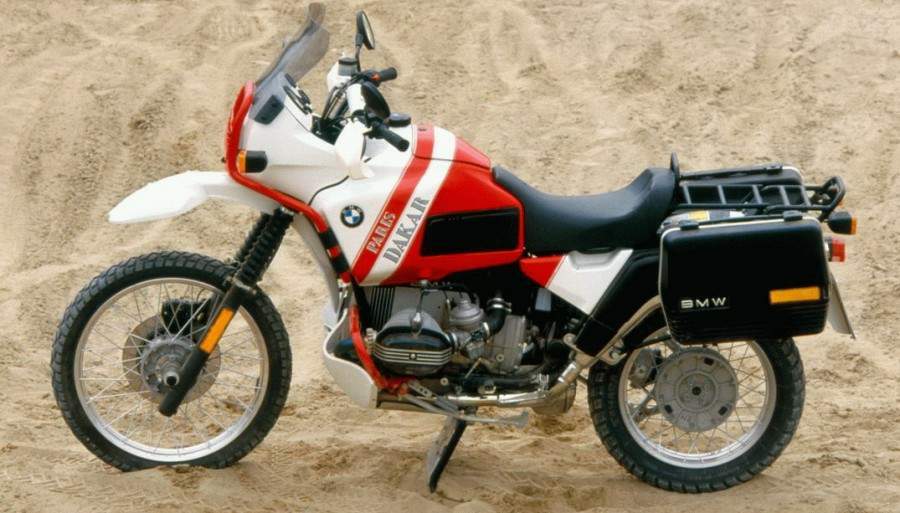
BMW
R100GS Paris-Dakar
Prices: $12,300 new; Circa $9000 now
For: Distinctive looks
Against: Big and heavy
BMW had already changed the motorcycle scene forever by more or less inventing the adventurer tourer with its R80GS of 1984, and then the Paris-Dakar version a year later. That series is now an accepted collectible, particularly in P-D form.
Move on a generation and just a few years, and the company launches its Paralever articulated shaft drive along with a big-bore option of the platform – now you had the choice of an R80 or R100. The Paris-Dakar version of the R100 hit the market in 1989 and was infamous for sporting its own version of a bullbar. Lacking in subtlety, perhaps, but it sure as hell got your attention.
Second prize: R80 Mono. This was never a headliner model for the brand but one of the nicest rides in the entire road range at the time and often overlooked. More powerful than the R65 and smoother than an R100, it’s one to keep an eye out for.
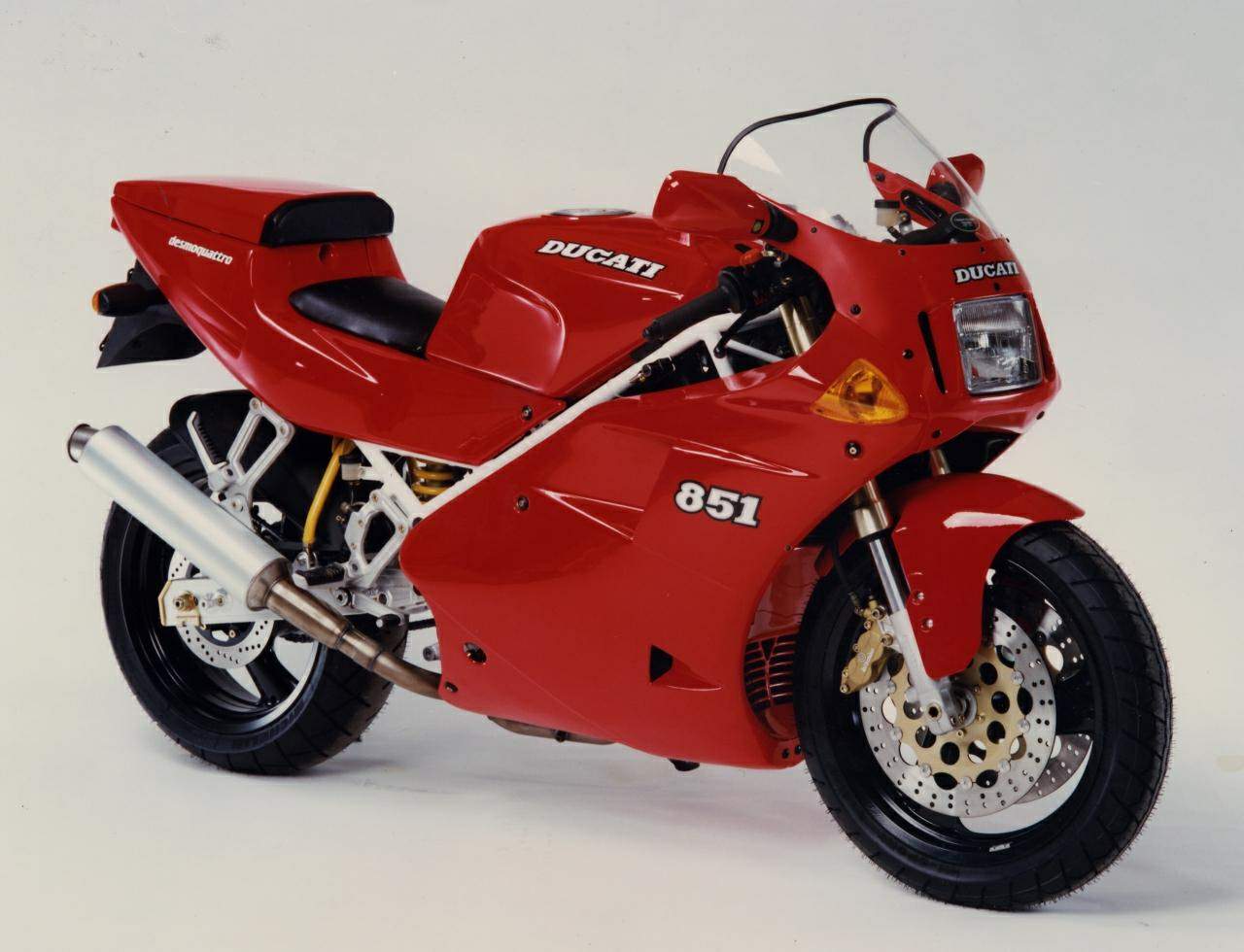
Ducati
851 Strada
Prices: $17,000 new; Circa $20,000 now
For: Hugely significant model
Against: Maintenance costs
Massively expensive back in 1990, the 851 was the platform that set Ducati on the path to world superbike fame and eventually dominance. The liquid-cooled, four-valve and fuel-injected platform carried Ducati into the modern world and had a huge amount riding on its success or otherwise.
Fortunately, it and the company survived, even if sales volume was pegged back by the stratospheric pricing. Actually, the initial retail ticket did drop by a couple of grand in Oz, which sparked a whole different controversy.
Though the styling as very eighties (think padded shoulders and big hair), they 851 sounded very sexy and performed better than its ‘mere’ 93 horses (68kW) suggested. Your biggest issue will be finding one, as they sold in tiny numbers.
Second prize: Paso 906. Though shunned by the majority of Ducatisti – mostly thanks to the oddball styling – the 906 gave its owners a lot of satisfaction as being a sorted version of the original 750 Paso, but with more grunt.
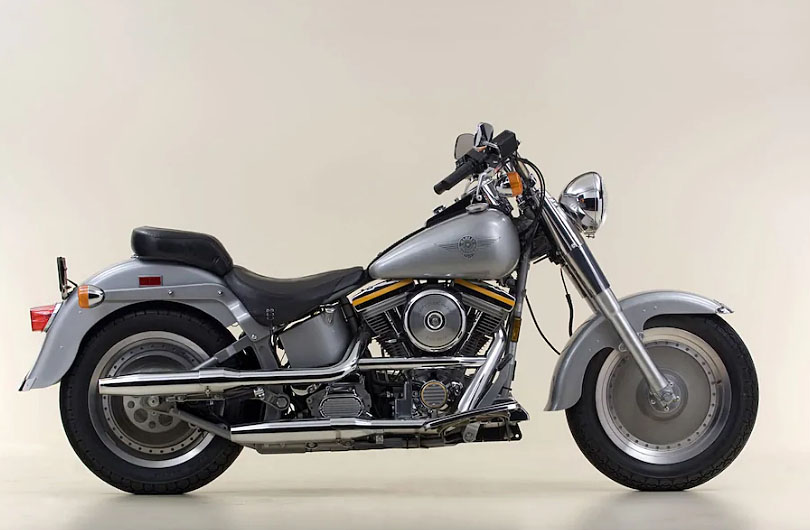
Harley-Davidson
FLSTF Fat Boy (first Evo model)
Price new: $15,400; Circa $20,000 now
For: Iconic piece of design
Against: Not the best handler
While most makers were wondering where their next sale was coming from, Harley-Davidson was – in a modest way – bucking the trend and building. That was helped in no small measure by the introduction of a tariff barrier in the USA domestic market for 750cc-plus motorcycles.
However the company, which was on the brink of bankruptcy in the early eighties, had pulled off some smart moves over the following years. The first was the development of the Evolution engine series, which was – particular compared to the Shovel predecessor – smooth and (most importantly) reliable.
Plus, the Motor Company revived the whole riders group idea and turned it into a massive sales force, alongside a burgeoning clothing and accessories business.
With Willie G now at the styling helm, we saw some iconic new releases, with the very first Fat Boy being a show-stopper. Good early ones are now hard to find, but well worth the hunt, even if that generation Softail was an ordinary handler.
Second prize: The bare-bones FXR Superglide from the era. It was a better ride than the Softail and the pick of the litter if you just want a simple back-to-basics Harley experience.

Honda
VFR750FL
Price new: $7300; Circa $4000 now
For: Great performance package
Against: Most are worn out
Right from its launch in 1986, Honda’s second major crack at the V4 road platform was a compelling motorcycle. With gear-driven cams, the ultra-flexible powerplant made some great noises and backed that up with performance that could keep most sports bikes honest.
Honda in fact threw a lot of engineering resources at this model and was rewarded with solid sales pretty much the whole way from 1986 through 1997. Oh, and it copped countless ‘best all-rounder’ awards from assorted magazines. Over that time it went through three major generations, and 1990 marked the start of the middle gen, aka the RC36.
That meant it scored a restyle to include twin headlights, along with a major chassis make-over that included wider rims to accept more modern tyre sizes. Somewhat cruelly, many people felt this and the last gen were superior to the 800 that followed. Your biggest issue now will be finding one that’s not worn out.
Second prize: ST1100. This time we’re talking a V4 laid along the frame, with belt-driven cams. This was a stupendous tourer – fast, comfortable, with a huge fuel range thanks to the 27 litre tank.

Kawasaki
ZXR750H2
Price new: $9950; Circa $14,000 now
For: Fantastic looks
Against: Unmolested versions are rare
Welcome to one of the anomalies of the weird and wonderful organism that is the used motorcycle market. One the face of it, a humble 1990 inline four from Japan should not be attracting big money – particularly when it’s not a limited edition or something built by the factory’s race division. In other words, not an RC30.
But while Honda offered the RC30 and Yamaha the OW-01, racer specials, Kawasaki was content to go with the budget version, a cooking model ZXR750. Budget it may have been, but the ZXR did run a pretty decent chassis for the time, hosting a warmed-up GPX750 powerplant.
The end result was a very quick road bike, a great basis for a track weapon, and one of the best-looking motorcycles Kawasaki ever made. It’s that latter point which has helped to make it a hot item among collectors.
Second prize: Kawasaki stuck with the theme right through to the mid-1990s and remained reasonably faithful to the original plan. So later models are worth a look.

ZZ-R1100 first model
Price new: $11,200; now circa $6000
For: Ultra quick and capable
Against: Early models are mostly worn out
The poor old Zee-Zee Top seems to have been forgotten by most folk looking at latter-day collectibles, and that’s a fate it definitely doesn’t deserve. Back when it was launched, this was a very quick and formidable motorcycle. It still is.
There were no great surprises under the paint with this one, instead some very carefully considered development. The factory had dented its high-performance reputation with the fast but flawed GPX1000RX and the subsequent ZX-10 only partially recovered it.
This bike comprehensively put the company back in the top-order sports-tourer game, with a claimed 147 horses (108kW) and a top speed over 280km/h. Not only was this thing seriously fast, but it was manageable and handled well for its day. A really well-sorted bit of kit.
First-edition models still haven’t made it to the collector radar, but they deserve to.
Second prize: ZX-10 1988-on. The first-gen ZX-10 feels big and ponderous compared to a ZZ-R, but is a supremely comfortable cruiser that has brilliant eighties glam looks.
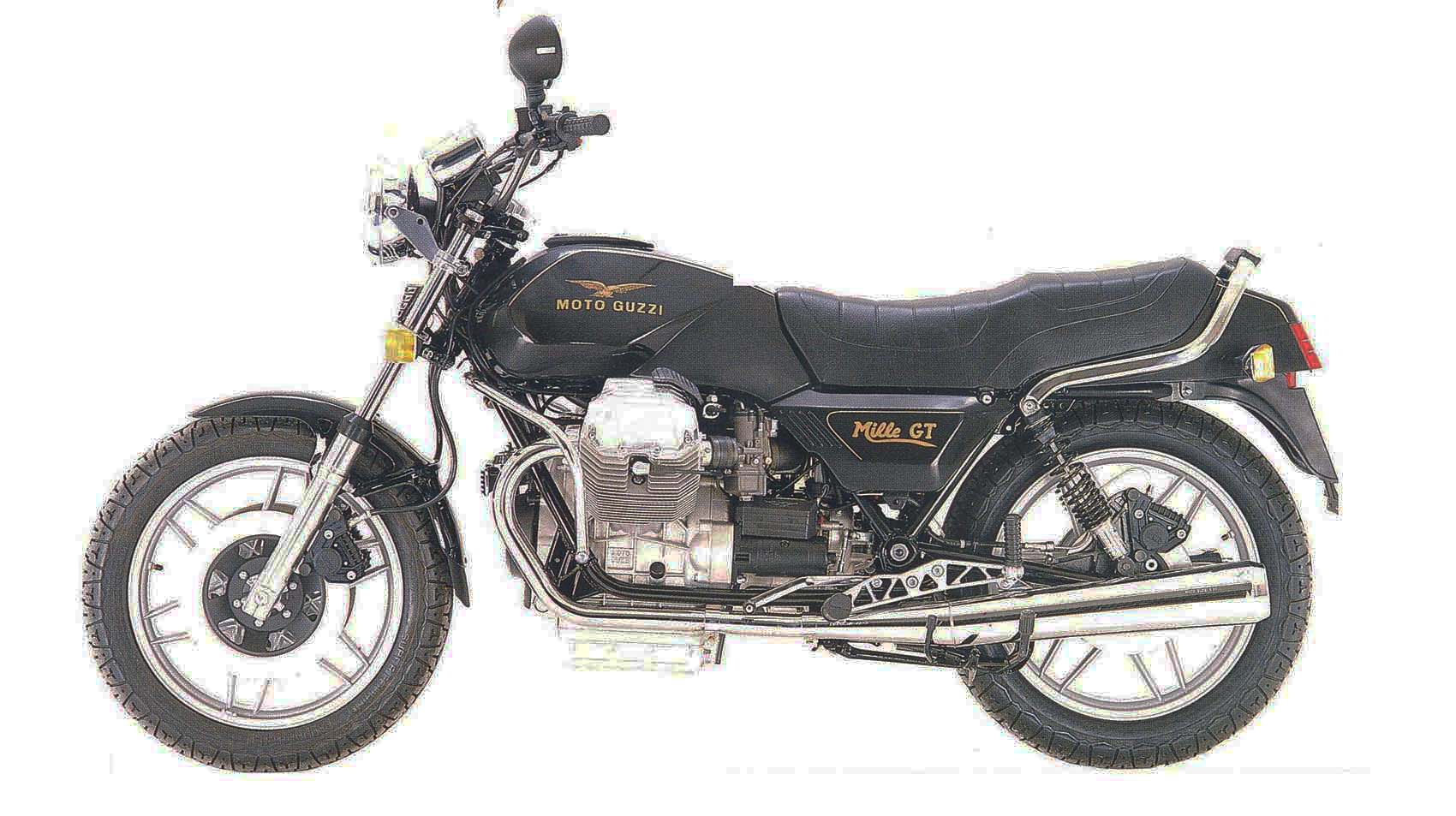
Moto Guzzi
1000 Mille GT
Price new: $11,000; Circa $11,000
For: Does what Guzzi is good at
Against: Very short supply
According to one commentator at the time, this hybrid model from Moto Guzzi repesented a time when it finally realised that competing with the Japanese on styling or technical grounds was a complete waste of time. Okay, that’s a little cruel and it was a commentary aimed at the late model Le Mans sports tourers, which were delightful but suffering an identity crisis.
Roll in the Mille GT, which was essentially an amalgam of the powerplant from the California tourer and the rolling chassis from the T5. Not rocket science, when you think about it and a sensible thing to try given how badly the marque was struggling at the time.
Though Guzzi copped a little flack for cobbling together a hybrid rather than a whole new model, there were some worthy updates over the T5 including sensible wheels sizes. It was far from being the quickest bike on the planet, with around 67 horses (49kW) on tap, but was a thoroughly enjoyable and undemanding backroads cruiser.
Price really killed this one, so very few were sold on the local market.
Second prize: California III. The bike the GT’s engine came from and one of the best cruiser tourers available at the time. They actually handle okay and have respectable performance.
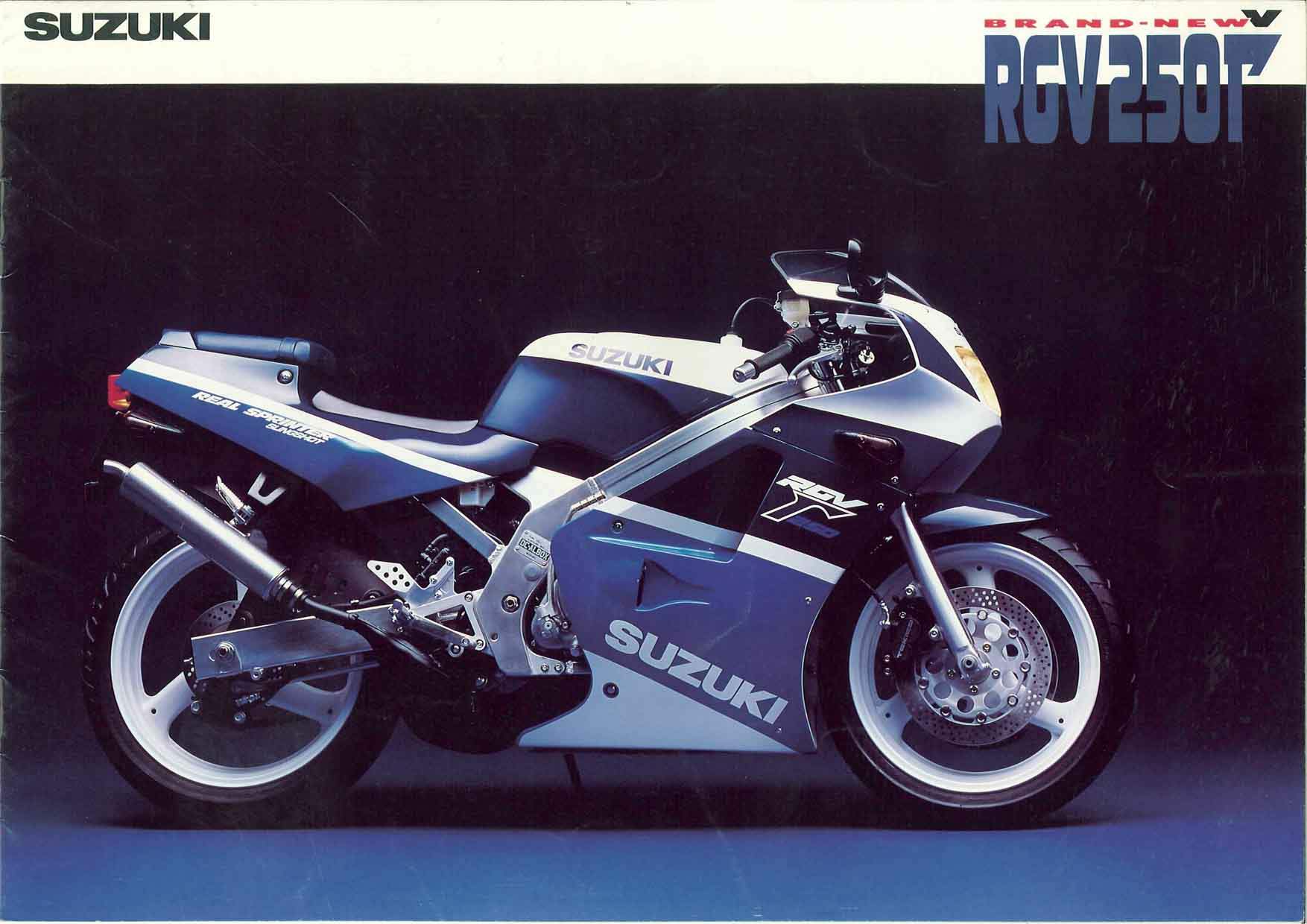
Suzuki
RGV250L (second model RGV)
Price new: $6300; Circa $8000
For: Quick and ultra sharp
Against: Very low survival rate
Back when these things were new, your local racetrack would be infested with the things. In their glory days, 250 production races would feature anything up to 40 RGVs, sounding like a pack of demented hornets and showing every sign of being ridden by people who at best had a very tenuous understanding of physics.
The RGV and its closest competitors effectively took our understanding of what was a performance bike and turned it on its head. You didn’t necessarily need a giant four-stroke powerplant to do the job, when a 60-horse (45kW) two-stroke weighing a good 30-plus kilos less was more than up to the task.
Suzuki’s RGV really dominated the class for years and this era represents the breed at the height of its popularity and powers. And of course you could get them in race replica livery, such as the Pepsi-sponsored colour scheme.
The survival rate is low, which is driving up the prices, but they still represent a lot of thrills for the dollar.
Second prize: GSX-R1100L. By now the 1100 (actually 1127c) was middle-aged and more sports-tourer than sports bike, but was still a very quick and enjoyable mount. This model picked up 17-inch wheels among other useful updates.
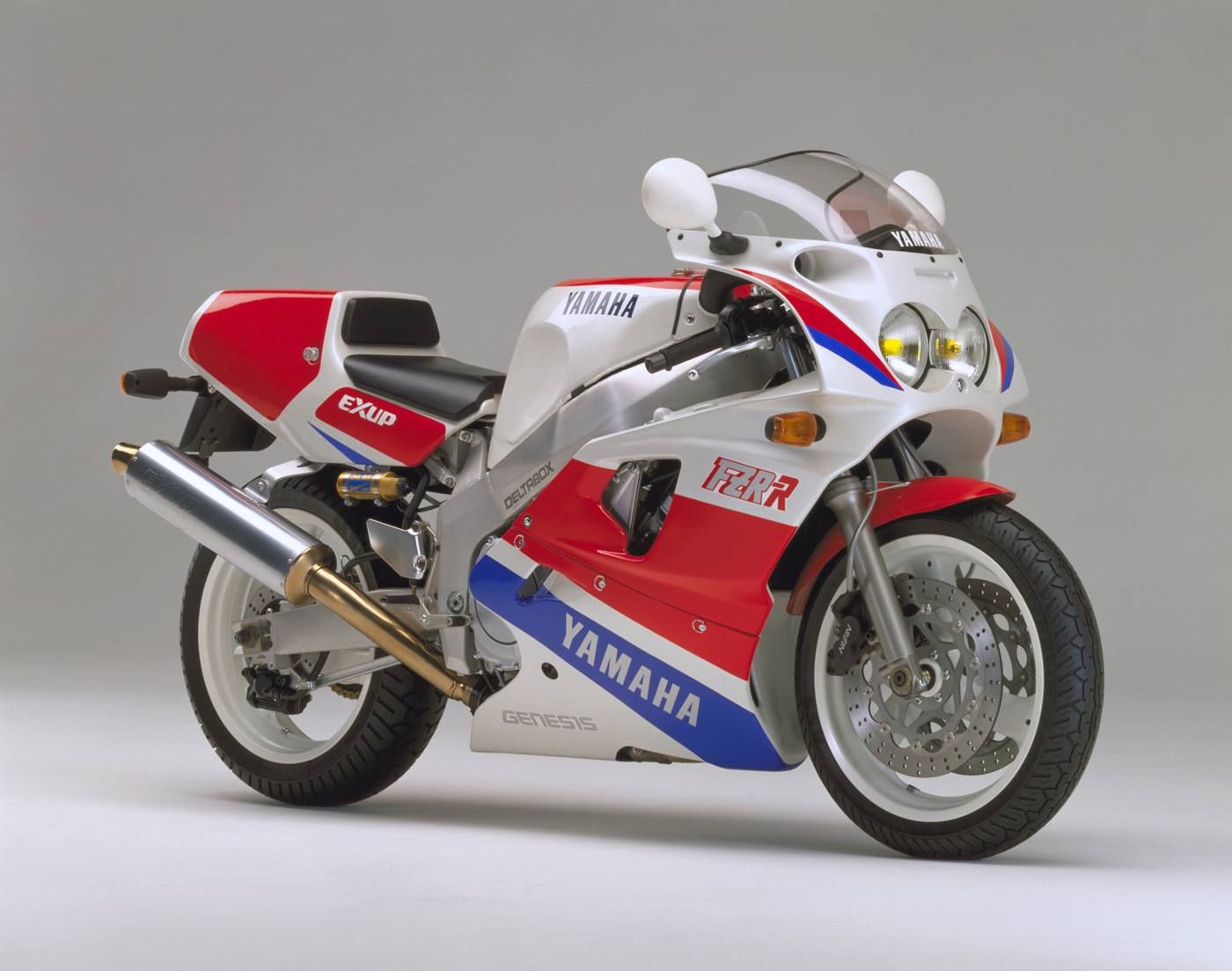
Yamaha
FZR750RR OW-01
Price new: $12,400; Circa $19,000
For: Exotic and cheaper than an RC30
Against: Hard to find in good shape
Though by now in their second and final year in the showrooms, FZR750RRs were still readily available in 1990, but were often overlooked in favour of something with more poke and less price. However that was ignoring the fact this was a premium superbike homologation machine that was, in hindsight, halfway reasonably priced.
For the money you got a powerplant that was around 20 per cent more powerful than a stock FZR750 with 88kW on tap. Plus you got the premium chassis sporting Ohlins suspension and full adjustment at both ends. Top speed was near enough to 260km/h – impressive for a 750 three decades ago.
Some of these things did in fact make it to the racetrack and the numbers still getting around in vaguely standard trim are very low. In fact they’re likely to be more rare than an RC30, which will command up to three times the price.
Second prize: Look for the ‘plain’ FZR750, which is not common here but was sold overseas. It runs a dual seat and lower spec, but was the ultimate iteration of the FZ750 that began the whole five-valve line.

XTZ750 Super Tenere
Price new: $8500; Circa $11,000 now
For: Important first model that worked
Against: Few brought in
The local launch of Yamaha’s big adventure touring challenger was one of those ‘blink and you’ll miss it’ situations. Yes, there was a local media launch, but then the bike seemed to sink almost without trace. Which was both weird and hugely unfair to Yamaha.
The heart of the matter was the parallel twin engine, using five-valve heads, which on the face of it should have been a compelling offering. BMW’s R80GS Paris Dakar was more expensive (by around $1000) and lagged significantly behind when it came to power and straight line speed.
But it seemed the German marque really did own this big adventure tourer sector, which was nothing like the size it is now. However the Super Tenere did go on to sell pretty well in Europe – particularly France.
As a package, the Super Tenere felt quick, capable and had a very distinctive growl from the big twin. While it may have struggled here when new, there are now local collectors who’d love to have a good one now, thanks very much.
Second prize: FJ1200. There’s something hugely appealing about this big mile-eating air-cooled sports tourer. It and the FJ1100 predecessor were capable of huge miles at speed and would be a good choice if your club rides head for the horizon.
Five Feisty alternatives
Kawasaki KDX200E2 $4200 new
Yamaha DT200R $4000 new, get the pair!
This passed most people by, but there was a massive war going on in the dirt world when people briefly rediscovered the joys of a little and lively two-stroke on the trails. Kawasaki and Yamaha both managed to make the class affordable and huge fun.
BMW K1 $17,300 new
BMW’s first use of the 16-valve engine and first use of the Paralever in a road bike. But the headline news was the wild all-enveloping styling that begged for a Devo-style headwear. Not for the shy, and a thoroughly interesting bike to own. Go for the wild red/yellow colour scheme.
Cagiva 900ie Elefant, $14,000 new
A now dormant Italian brand name with Ducati mechanicals, in an adventure tourer. What could possibly go wrong? Owners mostly loved them and they’re a guaranteed winner for the person who wants a talking point at the next Horizons Unlimited rally.
FXSTS Softail Springer $15,800 new
Second to the Fat Boy as an adventurous piece of styling, at the same time reviving springer front ends. As much a curiosity as something to ride, which proved surprisingly popular.
GSX-R750R $20,000 new
Pukka factory superbike homologation special that would go very nicely beside an OW-01 in your shed. Like the Yamaha, they’re nowhere near the stratospheric prices of RC30s and represent an interesting alternative.
The full list of 1990 highlights:
BMW
R100RS re-introduced 1988, monolever, $11,500
R100GS $10,350
K100RS $13,150
R80 $8250
K1 $17,300
Cagiva
900ie Elefant, $14,000
Ducati
900SS – 904 with Weber carb $13,000
750SS $11,500
750 Paso run-out $10,000
851 Strada $17,000
851 SP $27,000
906 Paso $12,500
Enfield
Bullet Deluxe 350 $4500
Harley-Davidson
FLSTF Fat Boy (first Evo model) $15,400
FLST Heritage Softail $14,500
FXR Superglide $12,300
FXSTS Softail Springer $15,800
FXSTC Softail Custom $15,300
Honda
VT250 Spada $5600
CBR600F $6800 (runout)
XL600VH Transalp (runout) $6400
XR600RL $5900
NX650L $5500
VFR750FL $7300
CBR1000FL $10,300
ST1100 first model $13,400
GL1500A first six $23,000
Husqvarna
510TE last model $9000
610TE first model Jan 1991 $9000
Jawa
500 speedway single $5500
Kawasaki
KDX200E2 $4200
GPX250R $5100
ZZ-R250 first model $5500
ZZ-R600 first model $8200
GPX750R last model $7900
ZXR750H2 $9950
GPZ900R A7 $9500
ZX-10B3 last of that shape $10,100
ZZ-R1100 first model $11,200
VN1500 runout of first series $10,900
KTM
600 Enduro $8200
Incas variant (2 years only) $8000
Moto Guzzi
650 Lario runout model $8000
650 NTX $8500
California III $14,450
1000 Mille GT $11,000
Suzuki
TS186ERL $2100
GSX250 Across first model $6300
RGV250L $6300
GS500E $5200
GSX600F $7200
DR650R first model $5200
GSX750F $8200
GSX-R750 L $9700
GSX-R750R $20,000
VX800 $7800
GSX-R1100 L $11,700
Nil Triumph – too early for Hinckley
Vespa
PX200E $3400
Yamaha
DT200R $4000
RZ250N $4400
XV250 $4400
FZR600A $7900
FZR750R $12,400
XTZ750 Super Tenere $8500
FZR1000 $13,000
XV1100 $8900
FJ1200 $10,000
-------------------------------------------------
Produced by AllMoto abn 61 400 694 722
Privacy: we do not collect cookies or any other data.


Archives
Contact
Archives
Contact




